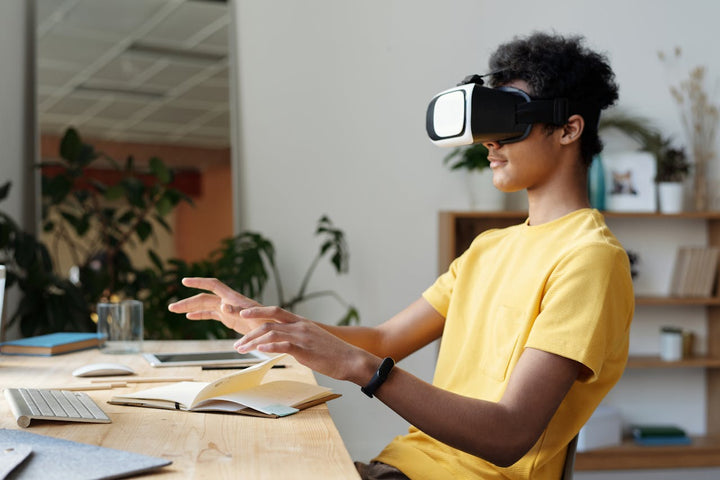We are floating in a sudden riptide of change in the job market. Just two years ago the image of an office worker doing their job from their bedroom would seem silly to us. But here we are: remote jobs are on their way to becoming the norm for many industries, and demand for them is skyrocketing.
The last year and a half have shown that remote jobs not only work but can also benefit employers and employees alike. Companies that want to remain competitive have quickly adapted to provide their employees the luxury of working from home.
While this trend can be seen in many industries (PWC, a professional services network, has gone fully remote) nowhere is it more prominent than in the tech industry, including the world of UX and UI design. Major players such as Google, Microsoft, Facebook, and Twitter now offer remote work to many of their employees.
UX Design is Remote-Friendly
So can UX designers work remotely? Yes. While remote work policies vary, UX design is inherently remote-friendly for several reasons:
- UX design is in high demand. As the popularity of remote work continues to rise, companies in high-demand fields are more likely to offer online jobs in order to remain competitive. Companies value UX design enough to search for the best talent out of state. Remote-friendly companies can cast a broader net to find and entice the best designers in the market.
- UX design is primarily digital, and the tools used for the job are digital. Commonly used tools include Google Forms, Zoom, FigJam, Adobe XD, and Miro. From research to wireframing to user testing tools, everything a UX designer does can be done at home on a computer and shared over the internet.
- You can learn UX design remotely and practice at home. Many UX designers begin their careers with an online bootcamp and create a digital portfolio of their work before applying to jobs. Working online is inherent to UX design.
Advantages of Working Remotely
Perhaps the most surprising advantage of working remotely is that statistically, working from home has proven to be more productive than working at the office. Workers attribute different reasons for this, from office distractions to time spent making small talk. Whatever the case, this increase in productivity is important, because it proves to employers that it is in their interest to allow their employees to work remotely. Everyone wins.
Working from home is also unsurprisingly cheaper for both parties. Employers don’t have to rent out expensive office spaces and workers don’t have to pay for transportation. This is to say nothing of the time saved traveling! And because of time saved, remote workers have more time to rest and have reported improved mental health and less stress. And if that wasn’t enough, cutting down on travel is great for the environment!
Lastly, remote work allows for unprecedented flexibility. Since remote workers don’t have to live near their job, they can often make their own schedules. You could even travel without taking days off from work and do your job from any place with an internet connection! This flexibility is especially important for women in the workforce, who have been leaving jobs at alarming rates since the pandemic started.
How to Land a Remote UX Design Job
If you want a remote job in UX design, then you need to learn remote-friendly tools. UX designers perform a wide variety of duties and therefore need a wide variety of tools. You’ll need to learn remote platforms such as Google Forms, FigJam, and Miro for communication, research, wireframing, and testing. Having practical knowledge of these services will set you up on the path to online work in UX design.
Experience is essential to landing a job in UX design. Once you acquire a working grasp of these remote tools, it’s time to put it to the test by completing UX projects. Accumulating experience with remote UX design tools will make it easier for you to get hired for a remote UX design job. Volunteer or intern for non-profits or start-ups to accrue relevant work experience.
The path to a UX design career is not always clear. A popular route to UX design jobs is through a bootcamp, a hands-on practical course that prepares students for a career. Bootcamps are popular for a reason: they offer major advantages over traditional degrees, such as low cost, a short amount of time required to complete, and continued career support from industry professionals. Your bootcamp mentors will guide you in your UX design career and will ensure that your digital portfolio is as good as it can be. With the mentorship and career support of industry professionals, you can start creating a space for yourself in the vibrant world of UX design.
Ready to Start Your UX Career?
Want to learn more about how to get into UX design? Schedule a free mentoring session! We will help you to get started in this industry.



